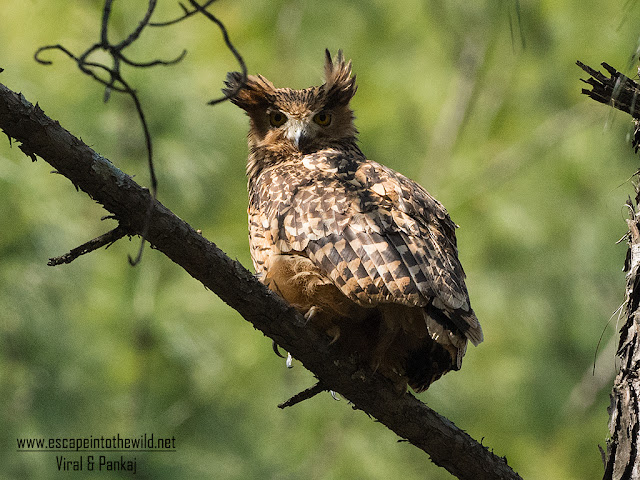Tawny Fish Owls: Nature's Aquatic Predators
Tawny fish owls are one of the largest owl species in Asia, with a wingspan that can reach up to 140 centimeters (about 55 inches). They have a rufous-brown plumage with streaks and spots, helping them blend into their forested surroundings.
These owls are typically found in dense forests near rivers, streams, and other water bodies. They prefer areas with abundant fish, which make up a significant portion of their diet.
As the name suggests, fish is a primary part of their diet. They are skilled hunters and can snatch fish from the water's surface with their sharp talons. However, they also consume a variety of other prey, including amphibians, reptiles, and small mammals.
Tawny fish owls are primarily nocturnal, meaning they are most active during the night. Their large eyes are adapted for low light conditions, allowing them to see well in the dark.
They are known for their loud and haunting calls, especially during the breeding season. They typically nest in tree hollows or old nests of other large birds.
he conservation status of the tawny fish owl varies by region, but it is generally considered a species of "Least Concern" by the International Union for Conservation of Nature (IUCN). However, habitat loss and degradation pose threats to their populations in some areas.
Tawny fish owls are captivating birds of prey with their size, striking appearance, and unique hunting behavior, making them a subject of interest for bird enthusiasts and researchers.
These owls are typically found in dense forests near rivers, streams, and other water bodies. They prefer areas with abundant fish, which make up a significant portion of their diet.
As the name suggests, fish is a primary part of their diet. They are skilled hunters and can snatch fish from the water's surface with their sharp talons. However, they also consume a variety of other prey, including amphibians, reptiles, and small mammals.
Tawny fish owls are primarily nocturnal, meaning they are most active during the night. Their large eyes are adapted for low light conditions, allowing them to see well in the dark.
They are known for their loud and haunting calls, especially during the breeding season. They typically nest in tree hollows or old nests of other large birds.
he conservation status of the tawny fish owl varies by region, but it is generally considered a species of "Least Concern" by the International Union for Conservation of Nature (IUCN). However, habitat loss and degradation pose threats to their populations in some areas.
Tawny fish owls are captivating birds of prey with their size, striking appearance, and unique hunting behavior, making them a subject of interest for bird enthusiasts and researchers.









Comments
Post a Comment